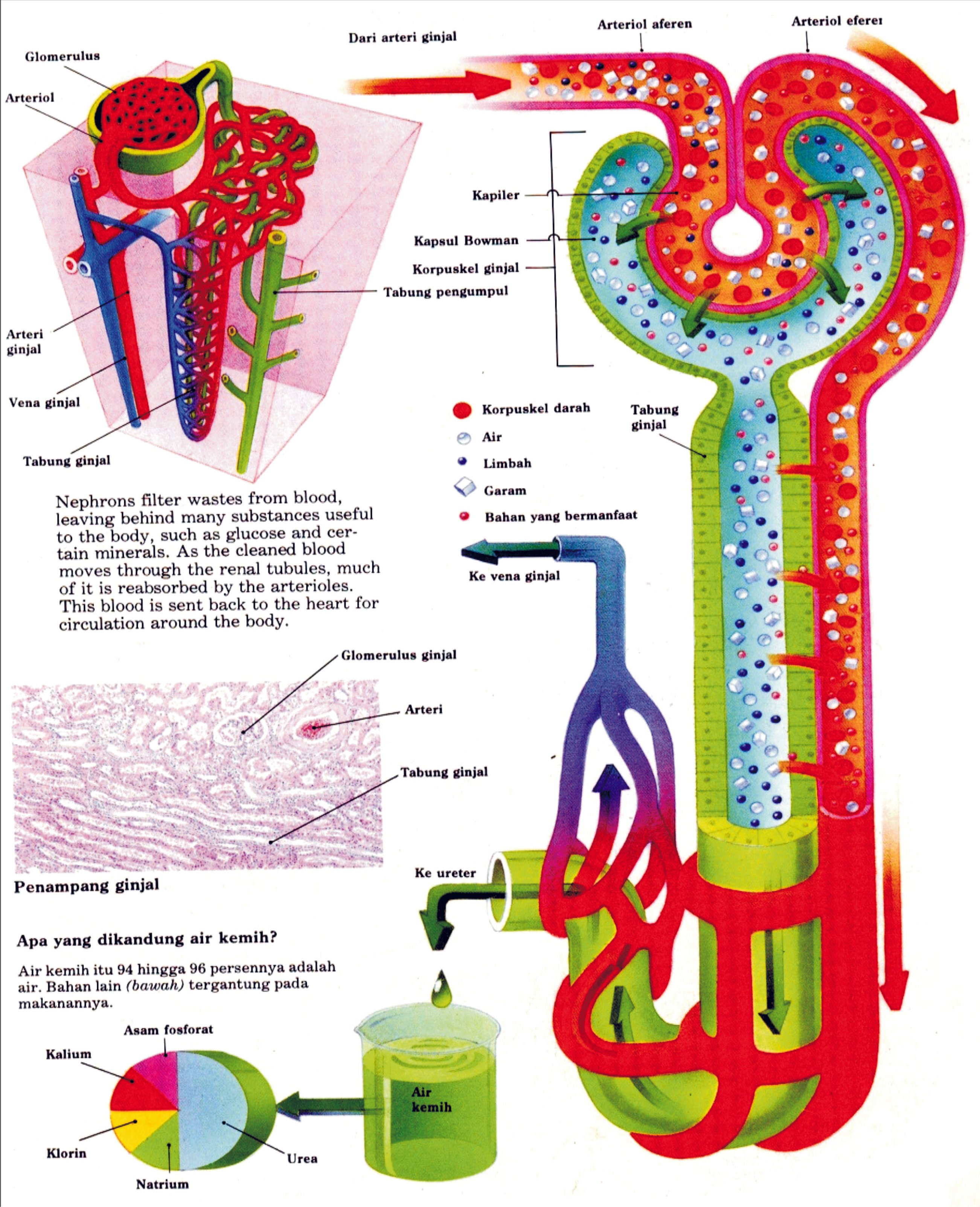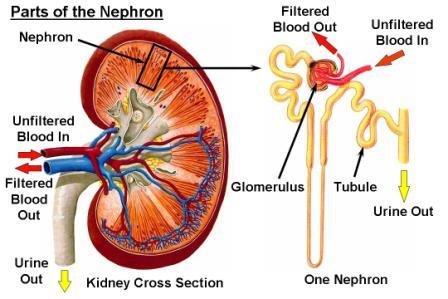Hi steemians ...
The life of a living being is a unique one to discuss, let alone about its organs, on this occasion as a medical profession, I want to give an informative story about the routine done by living things, especially humans.
Today most steemians probably do not know specifically about the formation of urine, but I will try to explain the plot of urine formation in the human body simply.
Medically in the anatomy of the human body, the formation of urine consists of three stages, the first stage filters (filtration), then reabsorption (absorption) and secretion (expenditure). the fluid to be filtered by the nephron is carried by the blood into the glomerulus. And in its cycle every day there are as many as 180 liters of water filtered by this organ.
Here the fluid in the body will experience filtration up to 30 times a day, every time dirty blood through the kidneys and out into clean blood. the blood that has entered the kidneys will come back to be filtered after a few hours, the glomerular capillaries are very easily bypassed by water molecules and small solutions. Blood pressure in the kidney is high so the water goes to the glomerulus.
There are several components that enter the glomerulus after filtration, such as water, NaCl, bicarbonate ions, hydrogen ions, urea, glucose, amino acids and drug residues. In the proximal tubules, there is reabsorption of glucose, amino acids, NaCl, water, bicarbonate ions and secretions of hydrogen ions and the rest of the drugs. Furthermore, the urine will flow along the vessels and until the Henle arch, there will occur the process of reabsorption of water and NaCl.
The reabsorption of NaCl, water, bicarbonate and hydrogen ions occurs in the distal contrast tubules, the distal tubules end up in the collecting channels, the collecting channels reabsorb if the body is deficient in liquids and minerals. the results of raptors are not like this will be collected into the urine.
Kehidupan makhluk hidup merupakan salah satu yang unik untuk dibahas, apalagi tentang organ tubuhnya, pada kesempatan ini sebagai profesi para medis, saya ingin memberikan hal yang informatif tentang rutinitas yang dilakukan oleh makhluk hidup, terutama manusia.
Dewasa ini mungkin sebagian besar steemians pasti tidak mengetahui secara spesifik tentang pembentukan urin (kencing)
Secara medis dalam anatomi organ manusia, terjadinya pembentukan urine terjadi dalam tiga tahap, tahap pertama adalah filtras (penyaringan), kemudian reabsorbsi (penyerapan) dan sekresi (pengeluaran). cairan yang akan disaring oleh nefron dibawa oleh darah ke glomerulus. Dan didalam siklusnya setiap hari ada sebanyak 180 liter air yang disaring oleh organ ini.
Disini cairan dalam tubuh akan mengalami penyaringan sampai 30 kali dalam sehari, setiap saat darah kotor melewati ginjal dan keluar menjadi darah bersih. darah yang telah memasuki ginjal akan datang kembali untuk disaring setelah beberapa jam, kapiler glomerulus sangat mudah dilewati oleh molekul air dan larutan kecil. Tekanan darah di dalam ginjal tinggi sehingga air menuju glomerulus.
Ada beberapa komponen yang masuk ke glomerulus setelah dilakukan penyaringan, antara lain berupa air, NaCl, ion bikarbonat, ion hidrogen, urea, glukosa, asam amino dan sisa obat obatan. Pada tubulus proksimal terjadi reabsorpsi glukosa, asam amino, NaCl, air, ion bikarbonat dan sekresi yang ion hidrogen dan sisanya obat-obatan. Selanjutnya urin akan mengalir mengikuti pembuluh dan sampai di lengkung henle, disini akan terjadi proses reabsorbsi air dan NaCl.
Penyerapan kembali NaCl, air, ion bikarbonat dan hidrogen terjadi di tubulus kontortus distal, tubulus distal berakhir di saluran pengumpul, saluran pengumpul melakukan reabsorbsi jika tubuh kekurangan cairan dan mineral. hasil raptor tidak seperti inilah yang akan dikumpulkan menjadi urin.


